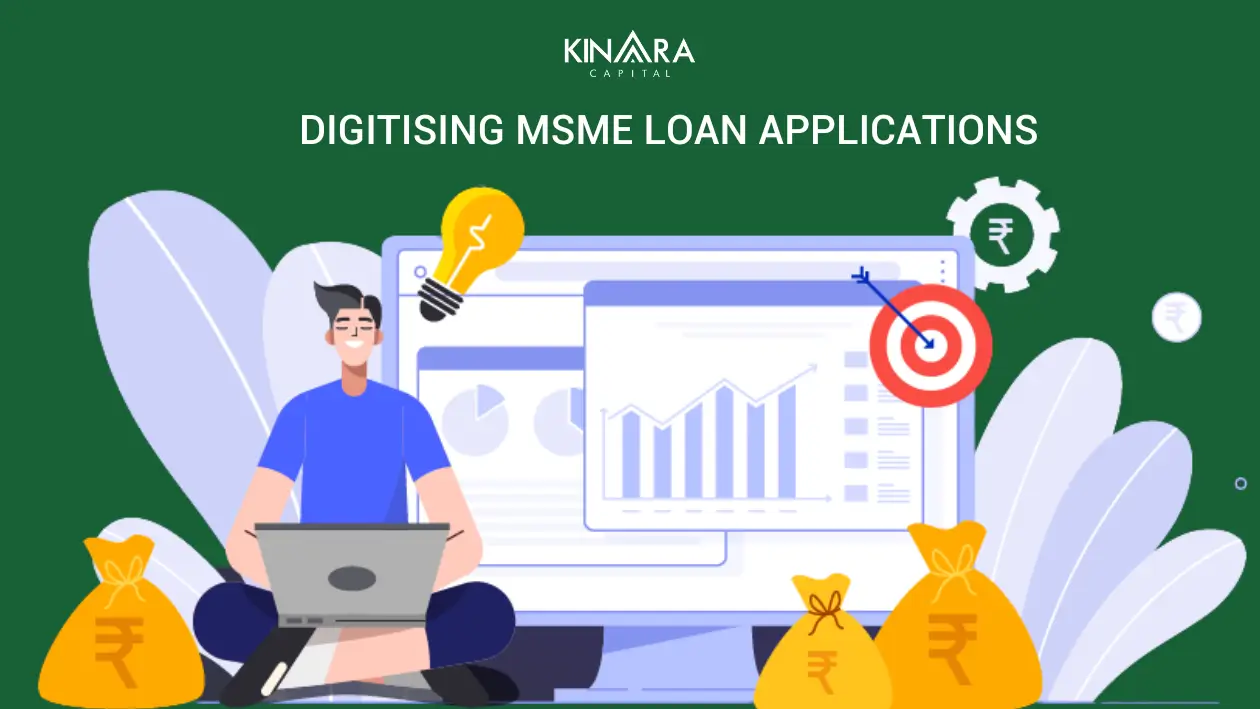
Micro, Small and Medium Enterprises (MSMEs) are the backbone of the economy, accounting for around 60% of employment. They are fundamental to the day-to-day provision of goods and services around the world. Yet, many struggle to grow and expand their businesses across states and countries. Among the many challenges that MSMEs face, a lack of access to finance, including trade finance, is frequently identified as a critical barrier to growth. The MSME financing gap is a reality that cannot be ignored and that should be tackled with determination to ensure that small players are given a chance to thrive.
Digitising MSMEs entails leveraging digital platforms to extend their marketing channels and applying digital innovations to better their management and service operations. Thus, changing business management towards more current approaches and earning a competitive advantage. MSMEs lack the breadth of expertise that investors do. This has an impact on both their capacity to discover potential financial sources and their level of comfort while pursuing novel financing strategies.
Digitising MSMEs entails more than just selling things through technology. Aside from that, it enables MSMEs to manage their finances, plans their cash flows, and buy raw materials online. As a result, digitalisation is crucial to the overall MSME business process.
Customers’ purchasing behaviours are changing as a result of online buying trends. They are now beginning to shift to digital commerce. By digitising the loan process, businesses can submit their loan applications online, receive instant decisions and receive funds within a few hours. This eliminates the need to visit a bank branch or wait in line for hours to process a loan request. In addition, the digitisation of MSMEs has enabled businesses to reduce the amount of paperwork involved in the loan process, making it quicker, simpler and more cost-effective. All in all, the digitisation of MSMEs has made loan transactions much easier and more convenient for businesses.
At Kinara Capital, the myKinara app offers fast and flexible collateral-free MSME financing within 24-hours. Working capital or asset purchase loans in the range of 1 lakh to 30 lakhs are available for the MSME industries in the manufacturing, trading, or services sector.
Businesses can take advantage of digital advertising and marketing strategies to boost their revenue. Through digitisation, MSMEs are able to streamline their operations and increase efficiency. This leads to lower costs of production and improved customer experience. Selling through the e-commerce channel has helped small businesses realise their potential in boosting the top line, reducing costs, and also creating more jobs in the market.
According to a report from the Tata Institute of Social Sciences (TISS), MSMEs adopting the e-commerce channel to sell goods have recorded a 194 per cent jump in revenues compared to those selling goods offline. Moreover, selling online helped nearly 15 per cent of enterprises introduce new products while 5 per cent started new shops, 6 per cent established new storage units, nearly 5 per cent found customers abroad and more. In fact, digitised MSMEs increased their sales by 42 per cent and 40 per cent in tier-I and tier-II cities, respectively.
Digitisation of MSMEs is an incredibly powerful tool for helping them to increase their geographic reach and consumer acquisition. By leveraging digital platforms, MSMEs can expand their customer base and reach new markets more quickly and cost-effectively than ever before. Digitalisation allows MSME owners to tap into new sources of revenue and capture new customers. It also helps them to differentiate their products and services, allowing them to target better and engage their customers.
Digitalisation can also provide MSMEs with access to data and analytics, allowing them to understand their customers better and tailor their products and services accordingly. All of these elements help MSMEs to increase their geographic reach and consumer acquisition, making digitalisation an invaluable tool for MSMEs looking to grow their business.
MSMEs that are grown locally typically have limited marketing potential. Their customers are only those that reside close to their business set-ups. They are dependent on more traditional methods of product promotion, such as word-of-mouth marketing. As a result, by digitising MSMEs, it is possible to increase the consumer network. Communities on various digital platforms will gradually learn about these MSMEs and their products, getting additional attention from a larger audience.
Digitalisation has been a game-changer for MSMEs looking to expand, which help businesses reach new markets, save costs, and increase revenue. It can also help businesses develop new products and services, as well as increase the efficiency of their operations. Digitalisation has also enabled businesses to better understand their customers and tailor their products and services to meet their needs. Finally, it can help businesses build relationships with customers and stakeholders, allowing them to better understand their needs and strengthen their brand. Digitalisation has been a key driver of business expansion, and it will continue to be in the future. However, there are some challenges that MSMEs face while digitising their businesses, which are mentioned below.
Technology can be a powerful tool for MSMEs to market their services and products on a global scale. However, many MSMEs are still unaware of the potential benefits of technology, such as increased operational efficiency, better customer service, and improved marketing capabilities. Most MSMEs have doubts about the return on investment from adopting the latest technology. They also take one step backwards due to the lack of skills to understand and participate in the digital economy.
Technology-driven innovations, such as cloud computing, digital marketing, and automation, can provide a much-needed boost to the competitiveness of MSMEs in global markets. Without a proper understanding of the benefits of technology, MSMEs are missing out on the opportunities available to them. By raising awareness of the potential of technology, MSMEs can gain a competitive edge and increase their profitability. Additionally, technology can provide MSMEs with the tools to overcome obstacles such as limited access to capital, lack of skilled labour, and limited reach. It can help MSMEs become more organised, cost-efficient, and profitable.
MSMEs are often limited by the cost of technology adoption when it comes to taking advantage of digital technologies. The cost of purchasing, training and maintaining digital technologies can be prohibitive, especially for smaller businesses. The cost of technological adoption can also include the cost of adapting existing systems to accommodate new technologies. Additionally, the cost of data storage and security measures can also be a hurdle for MSMEs, making it difficult for them to invest in digital technologies. As a result, MSMEs often limit themselves from taking advantage of digital technologies, such as increased efficiency, improved customer service and increased global reach.
To solve this issue, many NBFCs have come forward to help MSMEs with sufficient funding to digitise their businesses. MSME entrepreneurs can get access to credit within 24-hours from leading last-mile lending fintech companies like Kinara Capital.
MSMEs are concerned about the potential data privacy and exposure to digital fraud risks when digitising their business. They worry that their confidential information might be exposed and they could become victims of cybercrime and are also concerned about the costs associated with implementing and maintaining digital security measures. Furthermore, they may lack the technical knowledge to protect their data properly and are fearful of the consequences associated with a data breach and the potential negative impact on their reputation. MSMEs are also concerned about the lack of resources and expertise to protect their digital assets properly and the need to invest in the right technologies to mitigate these risks.
Digitisation has been a major boon in the past few years, and it has enabled businesses to become more efficient and cost-effective. It enabled MSMEs to access a range of services that can help them achieve their goals. Digitisation has played a critical role in helping to encourage more people to apply for MSME loans. Online applications for MSME loans are now becoming increasingly popular, and this is due to the convenience and efficiency that digitisation provides.
Digitisation has not only made it easier for MSMEs to apply for loans online but also for lenders to assess loan applications and approve them quickly. By applying for an MSME loan online, businesses can save time and money as there are no middlemen involved in the process. Businesses can also benefit from the wide range of options available online, as they can compare different lenders and find the best deal for them. MSMEs looking for Unsecured MSME loans can pay a visit to Kinara Capital’s official website or myKinara App to find suitable MSME Loans for their business needs.
Kinara Capital is an RBI Registered Systemically Important NBFC firm in India that provides Business Loans to MSME entrepreneurs. Unlike other loans, myKinara Business Loans require no property collateral. Serving across 4500+ pincodes and 300+ sectors, the Kinara Capital online business loan application process is simple and quick, facilitated by the myKinara app. Through myKinara App, MSME owners can acquire Business in 3 simple steps. The first step is a quick 1-minute eligibility test. Clearing the eligibility criteria, MSMEs can upload the minimum required documents on the fully secured portal. Once the verification of the documents is completed, the loan amount gets disbursed to the applicant’s bank account within 24-hours.
With quick and uncomplicated MSME business financing, myKinara can help you establish financial independence and expand your businesses. Also, we have a dedicated customer support team available between Monday – Friday (9.30 AM – 6.00 PM) at our toll free number 1800-103-2683 for any questions or assistance. This ensures that entrepreneurs can get the help they need throughout the loan process.
Digitalisation of MSMEs is an important step towards providing them with the necessary tools and resources to succeed in the current competitive business landscape. To catalyse the digitisation of MSMEs, there are several steps that can be taken.
By taking these steps, MSMEs will be well on their way to digitising their businesses and making the most of the opportunities available in the digital world.
Digital literacy involves the knowledge and skills to safely and securely use digital technologies for communication, collaboration, and problem-solving. With digital literacy, users can access and use the digital tools available to them and take full advantage of their potential for productivity and innovation. Digital literacy helps users protect their personal information, ensure that their online activities are secure, and be aware of potential risks and scams. With digital literacy, users can access and use digital technologies more safely and confidently, thus driving the uptake of digital technologies.
Digital loan transactions are becoming increasingly popular due to their convenience, speed, and security. Compared to traditional loan transactions, which often require lengthy paperwork and in-person meetings, digital loan transactions can be completed quickly and securely online. Digital loan transactions require less paperwork and are often more secure than traditional ones, as they use encryption technology to protect personal information. Additionally, digital loan transactions are usually faster than traditional ones, as they can be completed in minutes and often provide more competitive interest rates. Furthermore, digital loan transactions offer more flexibility and convenience, as they can be completed anytime, anywhere.
